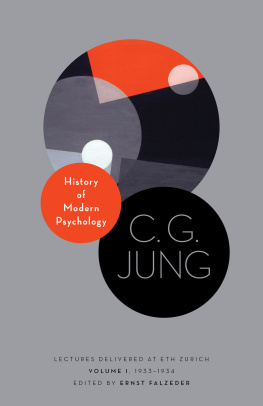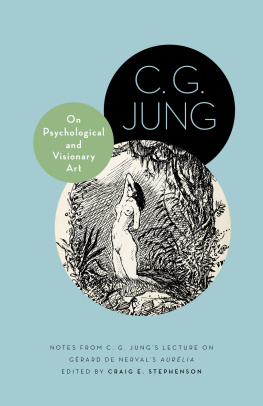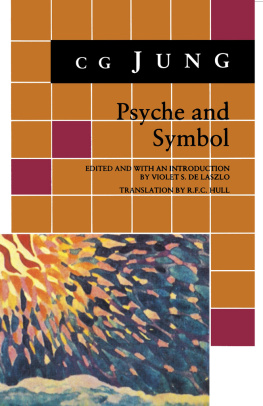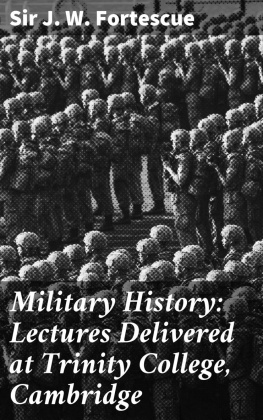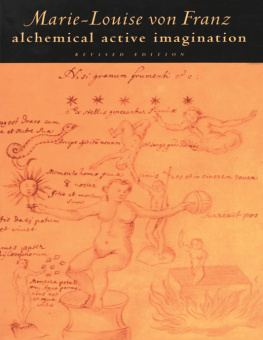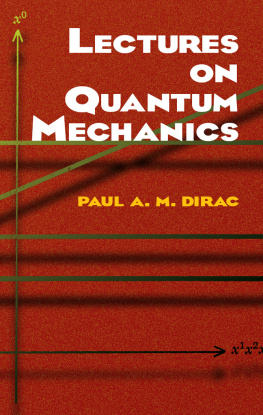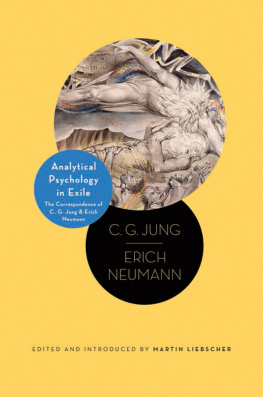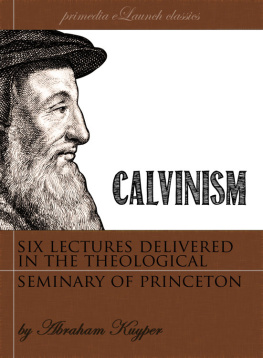History of
Modern Psychology
A list of Jungs works appears at the back of the volume.
History of
Modern Psychology
LECTURES DELIVERED AT ETH ZURICH
VOLUME 1, 19331934
C. G. JUNG
EDITED BY ERNST FALZEDER
Foreword by Ulrich Hoerni
Translated by Mark Kyburz, John peck, and Ernst Falzeder
Published with the support of the Philemon Foundation
This book is part of the Philemon Series of the Philemon Foundation
PRINCETON UNIVERSITY PRESS
PRINCETON AND OXFORD
Copyright 2019 by Princeton University Press
Published by Princeton University Press
41 William Street, Princeton, New Jersey 08540
6 Oxford Street, Woodstock, Oxfordshire OX20 1TR
press.princeton.edu
All figures are reproduced by permission of either the Jung estate
or the Philemon Foundation.
All Rights Reserved
Library of Congress Control Number: 2018954402
ISBN: 978-0-691-18169-1
British Library Cataloging-in-Publication Data is available
Editorial: Fred Appel and Thalia Leaf
Production Editorial: Karen Carter
Jacket Design: Kathleen Lynch / Black Kat Design
Jacket Credit: Laszlo Moholy-Nagy, Am 7 (26), 1926.
Production: Erin Suydam
Publicity: Tayler Lord
Copyeditor: Jay Boggis
This book has been composed in Sabon LT Std
Printed on acid-free paper.
Printed in the United States of America
10 9 8 7 6 5 4 3 2 1
Foreword: C. G. Jungs Activities at ETH Zurich
ULRICH HOERNI
Translated by Heather McCartney
GENERAL OVERVIEW
In May 1933 C. G. Jung applied to the Swiss education board to be accepted as a lecturer in the field of modern psychology at the Swiss Federal Institute of Technology (Eidgenssische Technische Hochschule; henceforth: ETH). the lectures have not as yet been published. This omission has now been rectified with this new publication.
THE ETH CONTEXT
ETH It was also deemed important to consider the different constituencies in the country, so it was contended that the university should be built in the German-speaking area of the country, while the polytechnic should be situated where French was spoken. Francophone cantons cautioned against the negative cultural influences of an institution with a Swiss-German character (against Germanification), while Catholic cantons feared the negative consequences of an institute in a Protestant area. Further, there were financial considerations: the new state had as yet scarcely any income at its disposal. The cantons in question would be obliged to provide buildings for the respective institutions. There were already several universities in the country (in Basle, Zurich, Bern, Lausanne, and Geneva). The National Council (great chamber) finally approved the joint project in 1854. The council of states (small chamber) failed to ratify the university proposal, authorizing only a polytechnic. It apparently did not consider such an institution to be significant. The canton of Zurich expressed an interest in adopting the project; soon a federal polytechnic was finally created in the city of Zurich.
COURSES AT ETH
Courses began as early as the autumn of 1855. There were six departments: I. architecture; II. engineering; III. mechanical engineering; IV. chemical engineering; V. forestry; VI. department of philosophy and public economics (= elective subjects), including a) sciences; b) mathematics; c) literature and public economics; d) the arts. The curriculum was to be delivered in one of the national languages: German, French, or Italian. Even today at ETH, key subjects are taught in two or three of the national languages. Departments IV offered solid courses leading to diplomas in technical disciplines. Admission to courses required a specific high-school qualification or an entrance examination. Department VI was to foster a grounding in general cultural values, without a specific final qualification. The subdepartments c) and d) were also open to members of the public wishing to attend single lectures, with no special entrance requirements. In time, the departments at ETH increased, with some being reorganized or redesignated, although the basic structure remained the same. Traditional university disciplines such as theology, medicine, classics, and so on were not offered.
THE ELECTIVE SUBJECTS DEPARTMENT
Department VI c) was particularly important: It offered a broad spectrum of lectures in philosophical, literary, historical, and political education. The concept of the university lived on in this department, and in this way students were introduced to the culture of their fellow citizens from other language communities. It was obligatory to attend at least one such lecture per week. These subjects were taught only to a level of relevance to aspiring engineers and scientists. The teaching of subjects with a low requirement for hours of attendance was delivered not by permanently employed professors, but by private associate professors. The education board pursued a high quality of teaching and advertised assistant professorship appointments internationally. The German author and philosopher Friedrich Theodor Vischer and the Swiss art historian Jacob Burckhardt were among those appointed in department VI c).
THE BUILDING
At its opening in 1855, the polytechnic was not as yet housed in its own building. Since the canton of Zurich was required to make premises available, the courses initially took place in rooms belonging to the university near the present-day Bahnhofstrasse and in the cantons grammar school. However, the success of the new institute soon gave rise to a shortage of space. The notable German architect Gottfried Semper (recommended by Richard Wagner who lived in Zurich at the time) had been head of department I since 1855. He was commissioned to design a new building for ETH. Switzerland at that time had a population of ca. 2.5 million, the canton of Zurich ca. 270,000, the city of Zurich ca. 20,000. through large extensions and renovations that took place between 1915 and 1924. The faade of the north wing flaunts allegorical wall paintings, designed to proclaim both the authority of the Swiss federal state, represented by the armorial crests of the cantons, and the academic ambitions of the institute:
NON FUERAT NASCI NISI AD HAS SCIENTIAE ARTES. HARUM PALMAM FERETIS
To be born would avail nothing if it were not for these sciences and arts. Through them you will achieve the victors prize
NUMINE, INDOLE, COGNOSCENDO, INTUENDO, MEDITATIONE, EXPERIMENTO, CONSTANTIA, IMPETU, EXEMPLO, INVENTIONE, ACUMINE, LABORE, DISCIPLINA, LIBERTATE, AUDACIA, CURA
By means of divine providence, giftedness, knowledge, contemplation, reflection, experiment, constancy, zeal, by example, invention, ingenuity, labor, discipline, liberty, boldness, diligence
SIMON LAPLACE, GEORGES CUVIER, CONRAD GESSNER, ALEXANDER VON HUMBOLDT, ISAAC NEWTON, LEONARDO DA VINCI, ARISTOTELES, PERIKLES, MICHELANGELO, ALBRECHT DRER, DANIEL BERNOULLI, GALILEO GALILEI, RAFAEL SANZIO, JACOB BERZELIUS, JAMES WATT
THE DEVELOPMENT OF THE POLYTECHNIC
Although originally initiated through small-state politics, the polytechnic was an international success. Courses had begun in 1855 with 71 students. The collection of the holdings of the present-day ETH students enrolled at the polytechnic. Of them, around two-thirds came from Switzerland, one-third from abroad, specifically from Austria-Hungary, Russia, and Germany. Even Albert Einstein studied at what was then the Institute for Specialist Teachers of Math and Science between 1898 and 1902. In 1905, the polytechnic was renamed the Swiss Federal Institute of Technology (ETH). At the time of Jungs application it included twelve departments with a total of approximately 1700 students and several hundred visiting students. The Department of Philosophy and Public Economics was now called Department XII for Elective Subjects and included philosophy/economics and math/science technical sections. The former was further divided into the areas of 1) literature, languages, philosophy (where Jung was active); and 2) historical and political sciences.

